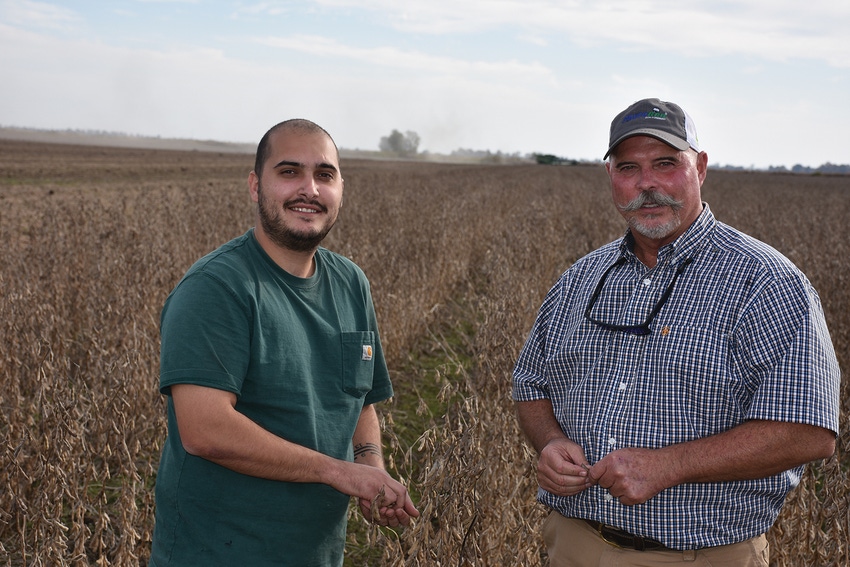
Despite storm systems that dumped heavy rains across the South, producers in the bootheel of Missouri continue to harvest soybean and cotton in mud and muck.
Sikeston grower Doug Scott said, "If we wait for better conditions to harvest, we'll just be putting it off until it is cold and wet."
He spoke with Farm Press as he stood at the end of a field that was rutted from harvest equipment and had water still standing in some rows.
The previous week he said the field was completely covered and flowing into the already full ditch he called Otter Creek as the remnants of Hurricane Zeta and a colliding cold front dropped upwards of six inches of rain on the Sikeston area. The water did not reach the fruiting branches of most of the soybeans, but he said he was afraid that quality might suffer, none the less.
Considering the weather-caused extension of the planting season, the amount of rain he received on his farm and the point he was in the harvest, he noted that he has yet to determine the real cost from the series of storms that have hit the area.
"We can compare once the ginning season is over – what was picked, quality and yield," he said. "But at this point we just don't know."
Good years
This season came after two good years for Scott.
"2019 was the best, yield wise, that we've ever had across the board on cotton," he said. "Before that, 2018 had been the best we ever had and then 2019 topped it."
This year he may not fare as well. He noted that one of the earlier hurricanes brought with it concerns regarding fruit load. Higher moisture, in addition to cloudy weather brings with it a tendency for cotton to shed fruit, according to Scott. When that storm passed, he said that the fruit dropped looked fairly normal and seems to have not affected the crop negatively.
But when Zeta collided with a cold front and subsequent freeze it slowed down the opening of his cotton and it didn't pick as clean.
Scott points to the fact that there are so many variables, you just have to do a good job on what you can control.
Growers in the area have been able to control a lot on the land that was pulled from the large swamp along the Mississippi in the early 1900s. Ditches were cut to drain the water and are able to handle good amounts of rain unless there is an abundance of moisture that comes up from the gulf associated with hurricanes.
"The weather can make you look like a fool or a genius," he said. "And, a lot of times, it's in the same day."
Further south in the bootheel, Steve Droke, Hornersville, Mo., says he doesn't farm in mud.
"I'm all sandy loam here," Droke says and notes that if you put a picker into a wet field in his area, you'll lose a machine.
Droke was able to get back into his fields a week after the rain event due to his sandier soil type and had been harvesting for eight or nine days when Farm Press spoke to him.
Busy Harvesting
"We got all our beans out, we got our peanuts out yesterday and we're working on our cotton just as hard as we can right now," he says. "Our ground will also dry out better than it does up there," he says referring to the heavier clay in the Sikeston area.
He thinks he'll make his five-year average on cotton yields, but like Scott, he knows his yield and quality were affected by the storm.
"The soybeans were not as good as they looked, but the cotton has been better than it looked," he says. "The cotton has surprised me, being a little bit better."
This is the first year growing peanuts for Droke. When the storm hit his peanuts had all been dug. Following the storm and after a week of drying, they were ready for harvest.
"We finished harvesting those yesterday. We're done," he says. "My neighbor finished harvesting cotton yesterday, so I'm over there harvesting peanuts for him and he's over here picking cotton for me."
He said that since this is his first year in peanuts, it seems as though they did well, despite the heavy rains.
Droke notes that because their planting, growing and harvesting windows are so small they are heavily equipped to get something done in a short amount of time.
"Give us a few days and we can make it happen," he says.
About the Author(s)
You May Also Like






